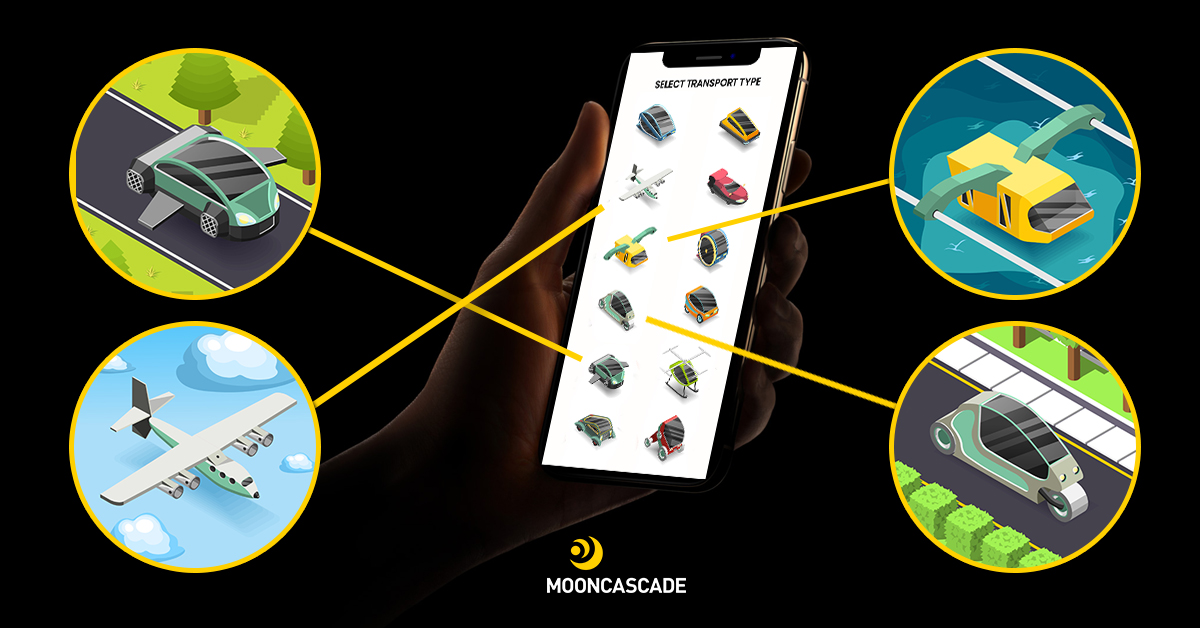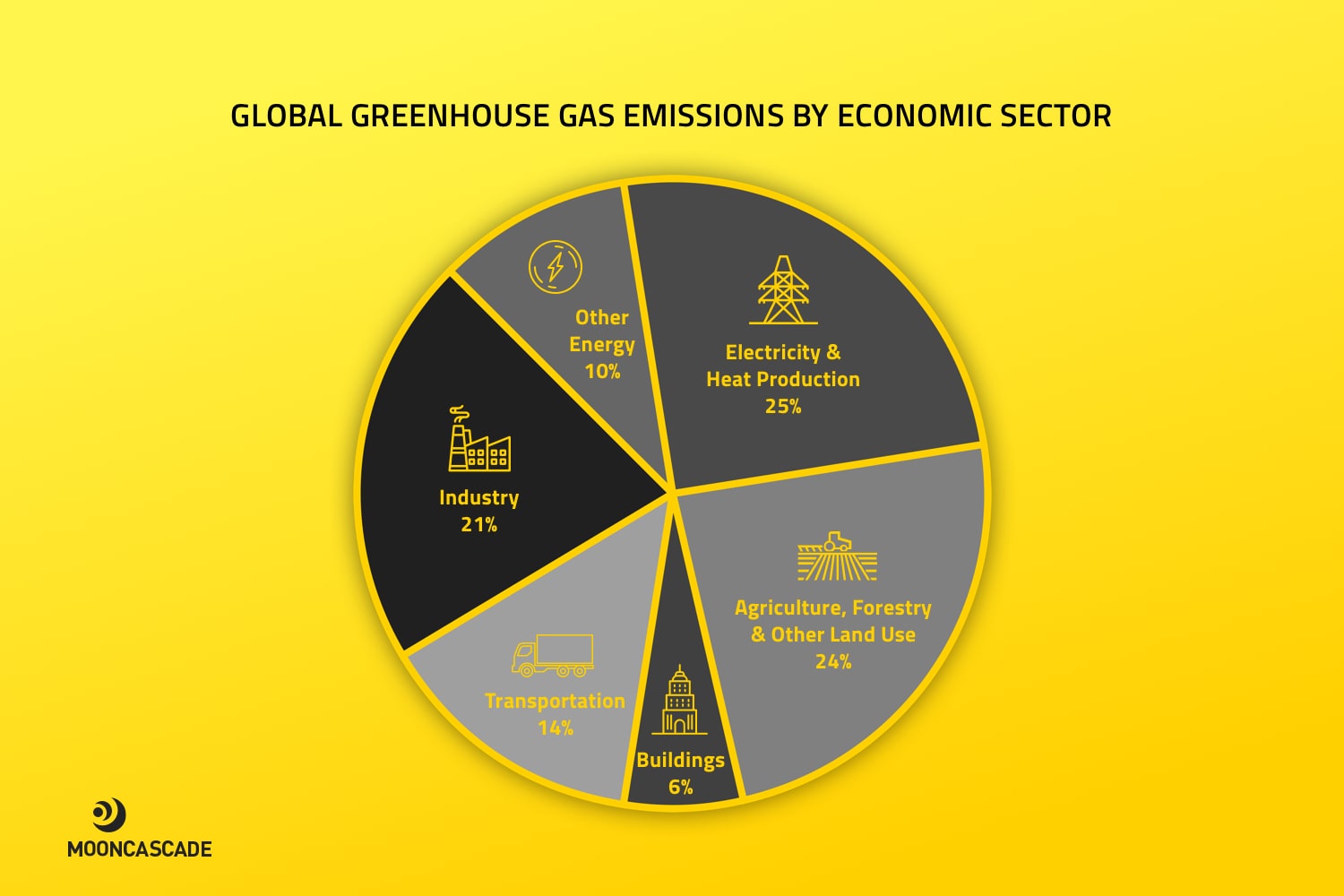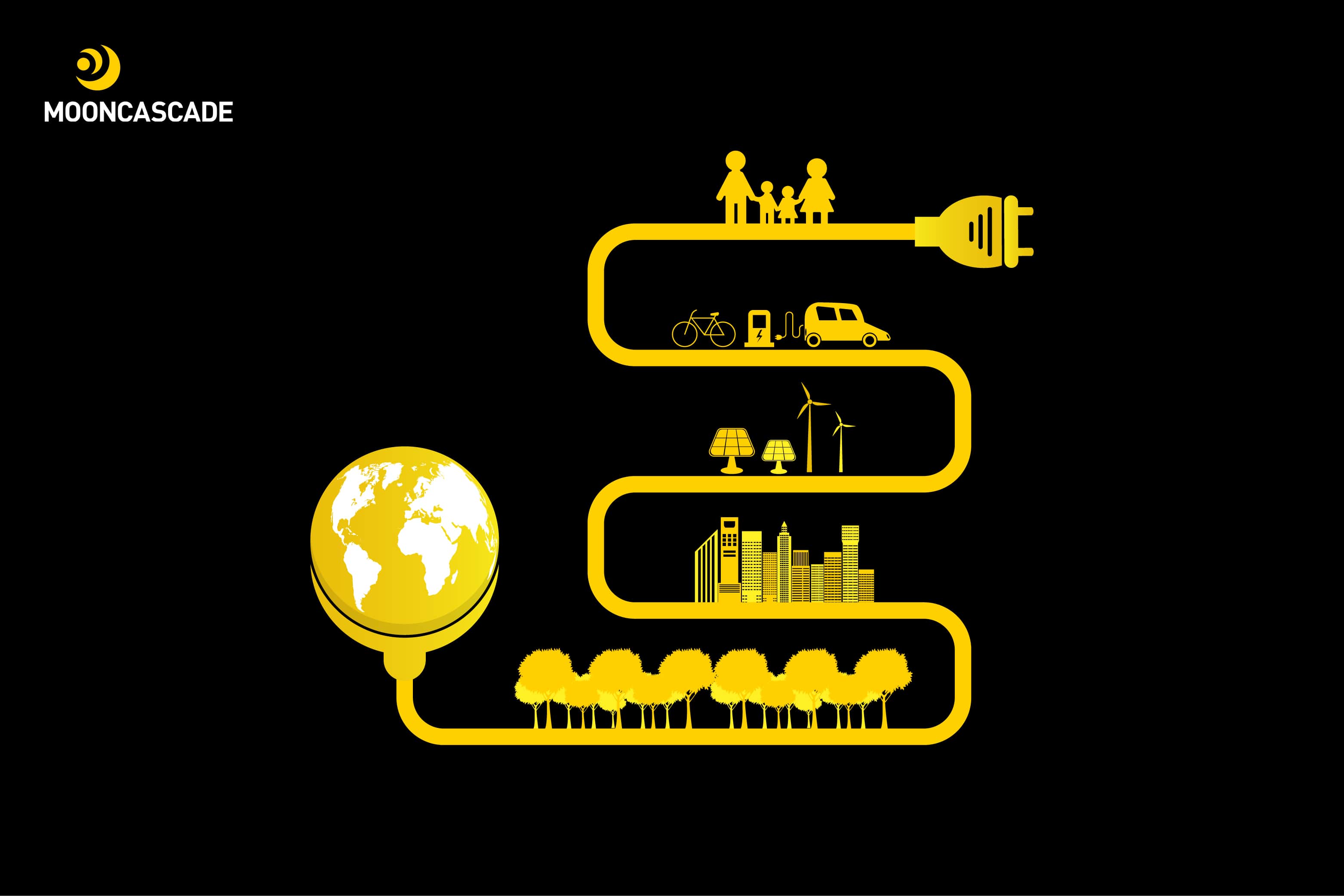Some thoughts on the future of mobility
The future of mobility is a hot topic these days, and not just because of the exciting products the industry has been cooking up lately. It’s also a great lens for thinking about some of the larger issues users, businesses, and governments face as they build the cities of tomorrow.
Is it possible to go green and make products people love to use, too? What can mobility teach us about the importance of collaboration in product development? Should transportation be our main focus when thinking about sustainability?
New mobility solutions will only be as successful as the work we put into them. It’s going to take innovative thinking, smart partnerships, and fact-based decisions to make happen. But together, we have what it takes to make them shine—for us and for the planet. Let’s find out how.
Going green? Don’t forget UX.

Most car enthusiasts will agree that the first generation of electric vehicles (EVs) lacked a little punch. This is partly because earlier models had different target segments, who were less concerned with exhilaration than with meeting green standards. While this made sense at the time, it’s hard to understand why enthusiasts continued to be neglected for so long.
Luckily, this is changing. As EV manufacturing matures, car companies are showing a renewed interest in users who love driving as much as they love the environment. An exciting example of this approach is the newly-announced Porsche Taycan. The Taycan features the kind of performance, design, and connectivity you’d expect from a high-level sports car, with all the benefits of running on an electric battery.
I like the Taycan but I love what it represents: a form of mobility built on new technologies, an environmental approach, and most of all, a customer-oriented mindset that makes it desirable. It’s a reminder that going green doesn’t have to mean throwing UX out of the window. And if you ask me, it’s a sign that Porsche is onto something many other companies have slept on.
The future of mobility is in collaboration.

As someone who works closely with the mobility sector, I hear a lot of predictions about what should (or shouldn’t) happen next in the industry. “Cities should be car-free by 2025!” “We should ban SUVs in the EU based on statistics from the USA!” “No more motorbikes!” Ten years ago, people were even predicting the end of car ownership. Turns out that they were wrong.
Instead of making big statements about what to avoid, product developers should be thinking about what to work towards—like making mobility greener, more efficient, and more accessible for everyone. That’s exactly what mobility as a service (MaaS) promises to do. And it’s why apps like Whim, Jelbi, and SkedGo are gaining traction so rapidly.
MaaS is a hot topic for anyone working in smart cities, the automotive industry, or transportation. The idea behind MaaS is to bring together the fragmented transportation market in one easy-to-use solution, cutting traffic, reducing emissions, and offering a better overall experience for users along the way.
For MaaS to succeed, we need improved collaboration between the private and public sectors. Just think of Paris, a city that many people saw as a test for success in the early days of micro-mobility. Instead of giving us a clear winner, Paris gave us a striking example of how badly things can go when the local government isn’t prepared for a new industry. Oversupply, under-regulation, and general chaos—people were stealing bikes and reselling them!—set a bad tone for the whole situation. A lot of startups lost a lot of money.
Cities should build strong partnerships with businesses and regulate new industries as they develop. Taking steps to improve current infrastructure will be essential as well. The country of Luxembourg, who recently made all public transportation free, is a great example. While their decision may not single-handedly solve the climate crisis or make MaaS succeed, it’s definitely a step in the right direction.
There’s no denying that collaboration is the way forward in mobility. Industry players should be pushing for legislative support and looking for smart partnerships to pool their skills into products that everyone can benefit from. Remember that transportation, like sustainability, are collective issues: we’ll only win if we face them together.
Sustainable development needs a “bigger picture” mindset to succeed.

This brings us to my last point. To build successful green mobility solutions, we’re going to have to look closely at what users, cities, and businesses need. But to make these solutions truly sustainable, we’re going to have to think even bigger.
More and more providers are developing products like scooters, self-driving buses, rental cars, and car-hailing services (where new cars are preferred). While exploring these new options is a good thing, it isn’t enough to solve issues like poor infrastructure or accessibility alone. It isn’t enough to stop global warming, either, even if scooters are far greener than cars.
In fact, because so many new mobility offerings rely heavily on first/last mile transportation providers, manufacturing can quickly reach a point where it produces more greenhouse gases than the product promises to decrease. As each new mobility startup grows, so does the impact its production has on the environment. I’m all for micro-mobility, but we need to keep hidden costs like these in mind.
Let’s take this idea a step further. The United States Environmental Protection Agency has some eye-opening data about which sectors generate the most greenhouse gases worldwide. Electricity and heat production come in first (25%), followed by agriculture, forestry, and other land use (24%), then industry (21%). Transportation comes in fourth, at 14%. If we look at emissions by country, China is responsible for 30% and the U.S. for 15% of all greenhouse gases produced across the globe.
All eyes are on the E.U. to standardize and regulate the mobility sector. But the E.U. has a relatively small footprint, coming in at only 9% of greenhouse gas emissions worldwide. Of course, the E.U. should pay attention to cutting its emissions and improving its mobility sector, but what about other countries and industries? If we were to start acting based on actual data, I believe we’d follow a very different (and faster) path to a clean future than the one we’re currently on.
Transportation is only one piece of the puzzle.

Mobility is changing fast—and that’s a good thing. But in such a competitive industry, it’s going to take more than another scooter startup to make a splash. Like any product-based solution, the future of mobility will have to think closely about end-user needs. That means focusing on things like UX and looking at real issues like infrastructure, which require building long-lasting partnerships between government and business.
More largely, mobility needs to remember the role it plays in the fight for sustainable development. If we overproduce anything—green solutions included—our planet will suffer. To build a brighter future, we need to look at the bigger picture, act based on facts, and reverse engineer our ideas from there. I’m almost certain that a unified, collaborative approach will be the key ingredient to any solution we come up with.
ARE YOU IN THE MOBILITY BUSINESS YOURSELF?
We can help you to build scalable, secure and successful products before your competitors surpass you. Have a look at what we’ve done in mobility so far, drop us an email about your idea and let’s talk about what we can do for you.

